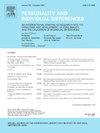Beyond emotional distress: Exploring the positive link between highly sensitive person trait and aesthetic sensitivity
IF 3.5
2区 心理学
Q1 PSYCHOLOGY, SOCIAL
引用次数: 0
Abstract
This study investigated the relationship between the Highly Sensitive Person (HSP) trait and aesthetic sensitivity, the ability to perceive and respond to beauty in daily life. While previous research has primarily emphasized the negative aspects of HSP, such as stress sensitivity and emotional overwhelm, its potential association with aesthetic sensitivity remains underexplored. Using online survey from Japanese adults, we examined how HSP trait predicts general aesthetic sensitivity, as measured by the Engagement with Beauty-Revised (EBS-R), and the intensity of aesthetic emotional responses, as measured by the Aesthetic Emotions Scale (AESTHEMOS). We controlled for the Big Five personality traits and empathy to isolate the unique contribution of HSP to aesthetic sensitivity. Results revealed that the HSP trait was significantly associated with both general aesthetic sensitivity and emotional intensity. Notably, the Aesthetic Sensitivity (AES) subscale of the HSPS was the most significant predictor, supporting its construct validity. Additionally, the Low Sensory Threshold and Ease of Excitation subscales showed modest associations with sensitivity to specific aesthetic domains, such as nature and art. These findings highlight the adaptive potential of high sensitivity and suggest its relevance for well-being and emotional enrichment through aesthetic engagement.
超越情绪困扰:探索高敏感人格特质与审美敏感性之间的积极联系
本研究探讨了高敏感者(HSP)特质与审美敏感性之间的关系,即在日常生活中感知和反应美的能力。虽然之前的研究主要强调HSP的消极方面,如压力敏感和情绪压抑,但其与审美敏感性的潜在联系仍未得到充分探讨。通过对日本成年人的在线调查,我们研究了HSP特征如何预测一般的审美敏感性(通过对美的参与-修订(eb - r)测量)和审美情绪反应强度(通过审美情绪量表(AESTHEMOS)测量)。我们控制了五大人格特征和共情,以隔离HSP对审美敏感性的独特贡献。结果显示,HSP特征与一般审美敏感性和情感强度显著相关。值得注意的是,HSPS的审美敏感性(AES)分量表是最显著的预测因子,支持其结构效度。此外,低感觉阈值和兴奋程度量表显示出对特定审美领域(如自然和艺术)的敏感性有适度的关联。这些发现突出了高灵敏度的适应潜力,并表明它与通过审美参与的幸福感和情感丰富有关。
本文章由计算机程序翻译,如有差异,请以英文原文为准。
求助全文
约1分钟内获得全文
求助全文
来源期刊

Personality and Individual Differences
PSYCHOLOGY, SOCIAL-
CiteScore
8.50
自引率
4.70%
发文量
577
审稿时长
41 days
期刊介绍:
Personality and Individual Differences is devoted to the publication of articles (experimental, theoretical, review) which aim to integrate as far as possible the major factors of personality with empirical paradigms from experimental, physiological, animal, clinical, educational, criminological or industrial psychology or to seek an explanation for the causes and major determinants of individual differences in concepts derived from these disciplines. The editors are concerned with both genetic and environmental causes, and they are particularly interested in possible interaction effects.
 求助内容:
求助内容: 应助结果提醒方式:
应助结果提醒方式:


